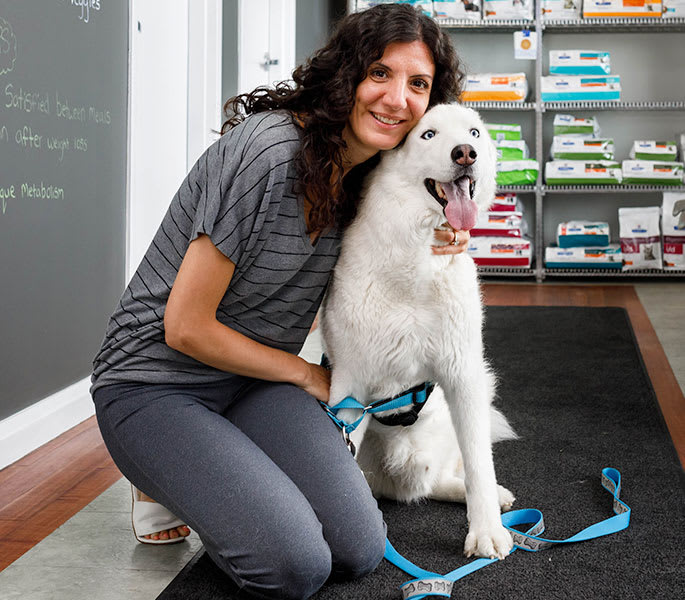About Fear Free
Fear Free Care for Anxious Pets
Our goal is to make visiting the vet a comfortable experience for your pet, and to reduce stress, fear and anxiety as much as possible for them. To this end, we utilize Fear Free methods in our veterinary practice.
Book An AppointmentWhat is Fear Free?
Fear Free is a series of training protocols for veterinary professionals, trainers and pet owners on the general reduction of fear, anxiety, and stress in pets.
In the context of our practice, Fear Free helps our vets and support teams take steps to reduce stress in our patients, which results in a better experience for all involved.
How We Implement Fear Free
At our veterinary clinics, the Fear Free approach extends throughout the entire hospital and is prioritized second only to the medical care of our patients. We work with our patients and their people to undertake the following steps before and during each appointment.
- Good Communication Between Pets & People
We start by understanding and identifying how pets communicate signs of stress to us.
These signs can include a number of subtle and obvious signals, from a tense expression or dilated pupils, to growling, hissing, or a tucked tail to name a few.
We also discuss the pet's known stressors with the owner, which can include sounds, scents, discomfort, disease processes, and unfamiliar people.
Getting to know our canine and feline clients, and understanding what stresses them out, and how the communicate that stress, helps us better manage it during their visits.
- Planning Ahead
An anxiety-free veterinary appointment starts at home.
Cats and small- to medium-sized dogs should be acclimated to their carriers. This can be accomplished by leaving the carrier out in an area of the home where the pet likes to be.
The carrier should be kitted out with toys, soft, comfortable bedding or a non-slip mat for dogs, and should have a top-off option to make it more accessible.
You can also spray cat or dog pheromones, either in the carrier or onto a bandana for larger dogs.
If transporting a medium to large dog, be sure to use an approved restraint device in the car. The drive should to the vet can be kept low stress by avoiding hard stops or starts and with calm music or silence.
- A Calm, Quiet Environment
At our veterinary office, we do our best to keep the atmosphere calm and quiet.
To help reduce your pet's stress in the waiting area, keep cats and dogs separate as much as possible. Cat carriers should be kept elevated off of the floor on a sturdy table or chair. Keep your dog leashed and close to your side to minimize interaction with other waiting pets.
During the appointment, our veterinary team will remain calm, speak in quiet voices and approach the pet in a slow, careful manner, as dogs and cats are often sensitive to loud noises and quick movements.
- Treats & Toys
To encourage a positive experience and decreased FAS at the veterinary hospital, rewards such as treats, toys, or petting/brushing can be used during an exam or when obtaining diagnostics as long as it is not contraindicated based on why the pet is at the hospital.
- Sedation & Restraint Options
If restraint is required during a procedure, our team may use a towel wrap, a muzzle, or an Elizabethan collar to ensure the patient is safe and comfortable during the process. A mild sedative may be recommended to make sure that the procedure can be performed safely.
If you already know that your pet experiences anxiety or stress when visiting the vet, it may be beneficial for the veterinarian to provide you with a mild sedative to give to your pet at home prior to an appointment.
- Fear Free Overnight Stays
Our veterinary team has guidelines in place to minimize stress during overnight stays.
We work to minimize smells and loud noises, and we place calming pheromone diffusers around the hospital.
We also sometimes use soft music or white noise machines to interfere with any sudden noises. Lights are kept low, and pets are given soft bedding and places to hide to make them more comfortable.
If we need to move your pet around in the hospital, for an exam, a procedure, or a walk outside, it is done slowly and calmly, avoiding interactions with other patients. Mild sedatives or anti-anxiety medications may be used in the hospital to reduce stress during the stay.
